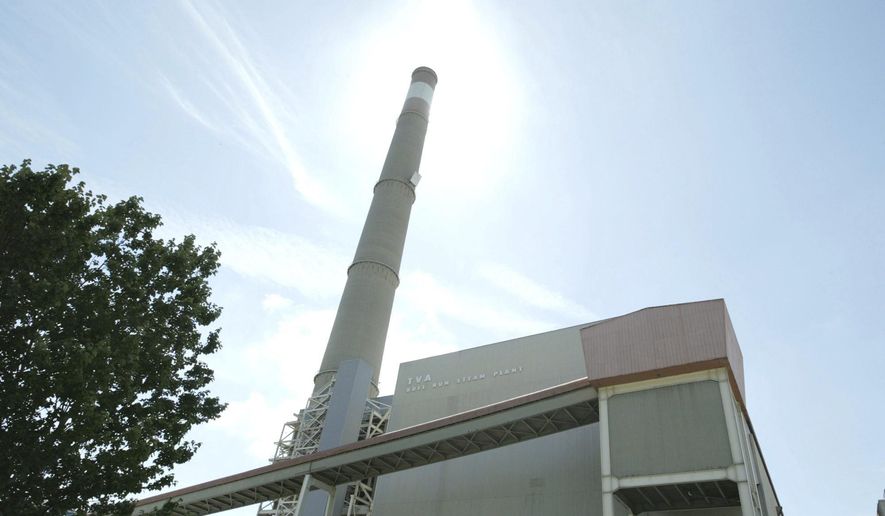Green energy groups blame fossil fuels for widespread power outages over the holiday weekend, and they are calling for America’s largest government utility, the Tennessee Valley Authority, to add more renewables to the mix as it embarks on a plan to provide electricity to seven states over the next two decades.
The Tennessee Valley Authority implemented rolling blackouts over the weekend, leaving homes without heat in freezing temperatures, disrupting holiday plans and postponing the Christmas Eve kickoff of the Tennessee Titans’ NFL game.
The power outages were blamed on natural gas and coal plant failures and unprecedented demand amid a major winter blizzard.
The strain on the grid occurred as the TVA makes power generation plans for the next two decades. Green energy groups say the recent storm is another reason for the TVA to end its reliance on fossil fuels.
“This event shows the weakness and vulnerability of our fossil fuel system,” Daniel Tait, executive director of Energy Alabama, a clean energy advocate, told The Washington Times.
The effort to bring more renewables into the TVA mix will likely be aided by at least some of the six new TVA board members appointed by President Biden and confirmed by the Senate earlier this month.
The new board members include Beth Greer, a longtime top aide to green energy advocate and former Vice President Al Gore. The list also includes Michelle Moore, a former Obama administration official who runs a nonprofit that promotes solar power and energy efficiency.
Green energy advocates hope the board will steer the TVA away from coal and natural gas and replace fossil fuels with renewables such as solar and wind power, and implement new programs to increase energy efficiency to reduce strain on the grid.
The TVA provides electricity to 10 million people in Tennessee and parts of six surrounding states. Its energy portfolio is currently only 3% wind and solar.
The bulk of TVA’s electricity is provided by nuclear (39%), natural gas (26%), and coal (19%), while hydroelectric, a renewable source, provides 11% and energy efficiency yields 1%.
Critics argue that making the grid 100% renewable would leave the system far less reliable, particularly in big winter storms.
“The reality is that adding a bunch of wind and solar to that system is not going to make those sorts of outages less likely,” Ted Nordhaus, executive director of the Breakthrough Institute, an energy think tank that supports nuclear energy, told The Times.
In sub-freezing temperatures, the wind often doesn’t blow and wind turbines can suffer damage, while solar panels do not work when covered in snow or cloudy weather.
“More wind and solar are not going to make the grid more reliable in intense weather conditions,” Mr. Nordhaus said.
Texas electric companies, for example, struggled with supplying power during a heat wave last summer in part because a lack of wind strained the renewable-reliant grid.
Green energy groups dismiss those arguments and have banded together to form the Clean Up TVA Coalition, which is pressuring the TVA to become entirely carbon free by completely removing coal and natural gas from the energy grid.
The group, which blamed the weekend power outages on the dependence on fossil fuels, describes itself as “a coalition working to propel TVA into a just, equitable, and fossil-fuel-free energy future by 2030.”
The TVA board will begin considering a new resource plan in early 2023 that will determine the mix of energy sources the grid will use over the next 20 years. Green energy groups are pushing to stop the TVA from replacing aging coal plants with natural gas lines. Clean Up TVA said the board’s energy planning for 2023 “could be an opportunity for the federal utility to align its objectives with President Biden’s mandate of 100% carbon-free electricity by 2035.”
So far, the board has issued a request for proposals for carbon-free energy suppliers to connect to the grid by 2029.
The TVA acknowledged the freezing temperatures shut down several coal and gas plants but said unprecedented energy demands during the subzero temperatures also contributed to the decision to implement rolling blackouts.
The nuclear power plant, which provides nearly 40% of the TVA’s electricity, stayed online throughout the weekend storm.
“You’ve got this huge inventory of nuclear that’s built and paid for,” Mr. Nordhaus said. “Whatever changes you want to make, don’t do anything that’s going to make it harder to keep those plants online and operating because in some ways, it’s the most valuable electricity we have. It’s always on and it’s very reliable.”
• Susan Ferrechio can be reached at sferrechio@washingtontimes.com.




Please read our comment policy before commenting.